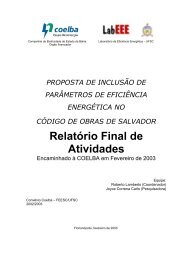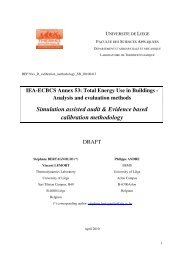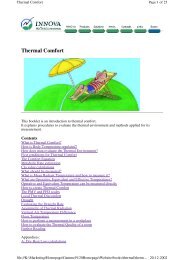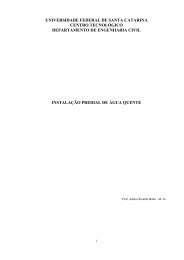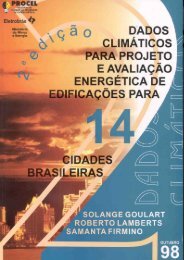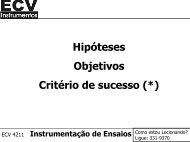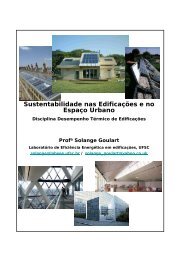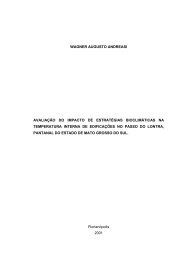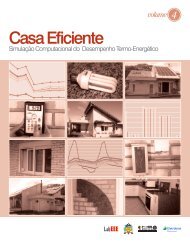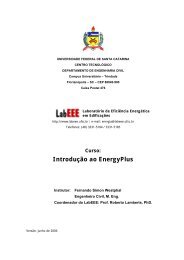ASHRAE STANDARD - 55R
ASHRAE STANDARD - 55R
ASHRAE STANDARD - 55R
You also want an ePaper? Increase the reach of your titles
YUMPU automatically turns print PDFs into web optimized ePapers that Google loves.
BSR/<strong>ASHRAE</strong> Standard 55P, Thermal Environmental Conditions for Human Occupancy 2/24/03<br />
Third Public Review Draft (Independent Substantive Changes to the Second Public Review)<br />
humidity variations within that space. Otherwise, absolute humidity shall be measured at all locations<br />
defined above.<br />
7.2.2 Height Above Floor of Measurements<br />
Air temperature and air speed shall be measured at the 0.1, 0.6 and 1.1 m (4, 24 and 43 in.) levels for<br />
sedentary occupants at the locations specified in Section 7.2.1. Standing activity measurements shall be<br />
made at the 0.1, 1.1 and 1.7 m (4, 43 and 67 in.) levels. Operative temperature or PMV-PPD shall be<br />
measured or calculated at the 0.6 m (24 in.) level for seated occupants and the 1.1 m (43 in.) level for<br />
standing occupants.<br />
Radiant asymmetry shall be measured at the 0.6 m (24 in.) level for seated occupants and the 1.1 m (43 in.)<br />
for standing occupants. If desk-level furniture (which is in place) blocks the view of strong radiant sources<br />
and sinks, the measurements are to be taken above desktop level. Floor surface temperatures are to be<br />
measured with the anticipated floor coverings installed. Humidity shall be measured at any level within<br />
the occupied zone if only one measurement location is required. Otherwise it shall be measured at the 0.6<br />
m (24 in.) level for seated occupants and the 1.1 m (43 in.) level for standing occupants.<br />
7.3 Measurement Periods<br />
7.3.1 Air Speed<br />
The measuring period for determining the average air speed at any location shall be 3 minutes. Turbulence<br />
intensity is measured in the same period by calculating the ratio of the standard deviation for the period to<br />
the average air speed. (See Section 3 for definition of response time and its relation to the time constant.)<br />
7.3.2 Temperature Cycles and Drifts<br />
For determining compliance with the non-steady -state requirements of Section 5, the rate of change of<br />
operative temperature is used. It is the difference between maximum and minimum operative temperatures<br />
measured during the same cycle, divided by the elapsed time in minutes:<br />
Rate of change (degrees/h) = 60(to max - to min) / time (minutes)<br />
The measurements shall be made every five minutes or less for at least two hours to establish the nature of<br />
the temperature cycle. The use of an automatic recorder is the preferred method of measurement; however,<br />
it is possible to make the measurements required in this section without the use of recording equipment.<br />
7.3.3 Clothing and Activity.<br />
In buildings, it may be appropriate to measure the clothing and activity levels of the occupants. These shall<br />
be estimated in the form of mean values over a period of 0.5 to 1.0 hour immediately prior to measuring<br />
the thermal parameters.<br />
28



